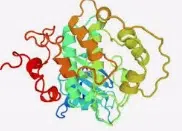Before entering fully into the meaning of the term macromolecules that concerns us now, let's discover its etymological origin. In this case, we can emphasize that it is a neologism formed from the sum of the following lexical components:
-The Greek term “macros”, which can be translated as “great”.
-The Latin word “molecula”, which is made up of two components in turn: the noun “moles”, which is synonymous with “mass”, and the suffix “-cula”, which means “small”.
In addition to everything indicated, we have to state that it was the German chemist Hermann Staudinger (1881 – 1965) who gave shape to the term macromolecules. He used that word for the first time in an article he published in the magazine “Helvetica Chimica Acta” back in May 1922.
This scientist, who won the Nobel Prize in Chemistry in 1953 for his discoveries in the field of macromolecular chemistry, is also known for discovering ketenes and also the so-called Staudinger reaction.
Large molecules are called macromolecules . These are elements that usually have a high molecular weight (that is, the sum of their atomic weights is high).
 It should be noted that a molecule is the smallest unit of a substance that, whether composed of different or the same atoms, maintains its chemical properties . Typically, a macromolecule is made up of thousands of atoms .
It should be noted that a molecule is the smallest unit of a substance that, whether composed of different or the same atoms, maintains its chemical properties . Typically, a macromolecule is made up of thousands of atoms .
There are organic macromolecules and inorganic macromolecules . According to their characteristics , on the other hand, it is possible to classify them into different groups. For example, according to how their structural subunits (which are called monomers ) repeat, they are called branched or linear .
In the same way, another classification establishes, based on the composition, that there are copolymer macromolecules, which are made up of two or more monomers, and homopolymers, which have a single polymer.
If what we take into account is its origin, there are two very different types:
-Artificial macromolecules, among which are polymers, for example.
-Natural macromolecules, such as polysaccharides, proteins or carbohydrates, among others.
Proteins are macromolecules that develop from chains of amino acids. These are substances that are essential for life since they fulfill structural and defensive functions and promote growth.
Lipids are also macromolecules. In this case they are mainly made up of hydrogen and carbon and, to a lesser extent, oxygen. They may also present nitrogen, sulfur and phosphorus.
The set of macromolecules includes carbohydrates (also known as carbohydrates , saccharides or carbohydrates ). Its most important components are carbon, oxygen and hydrogen.
Both proteins, lipids and carbohydrates are macronutrients . These macromolecules are part of this category because they provide energy to the body. As can be seen, the same substance can be considered a macromolecule and a macronutrient simultaneously since they are not mutually exclusive classes. Each concept refers to different issues.
